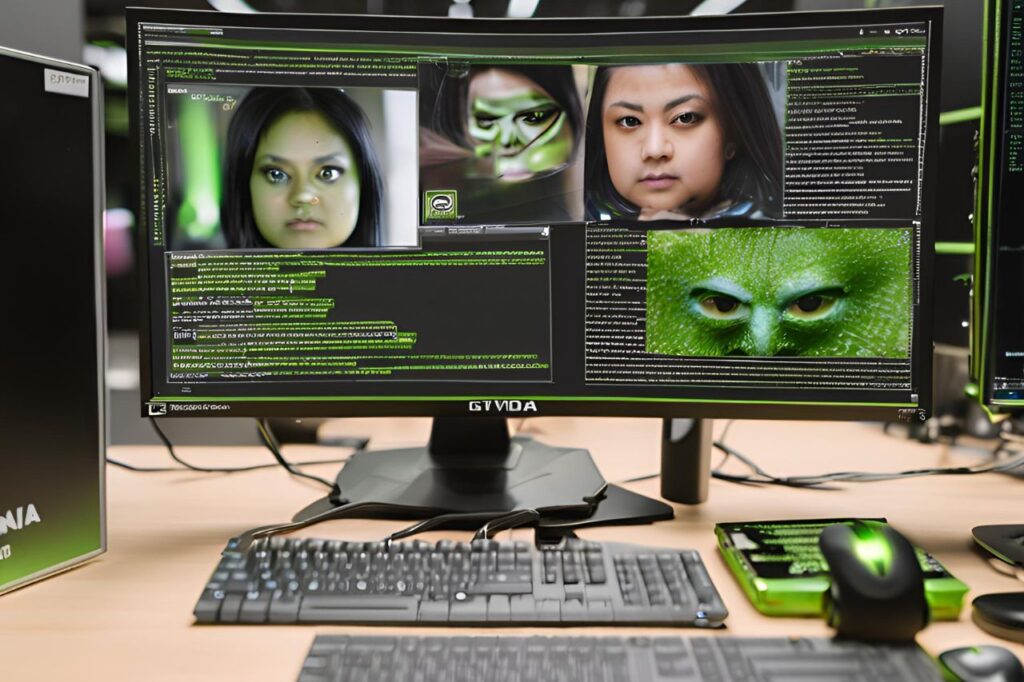NVIDIA has demonstrated how its generative AI technologies can help to quickly identify and mitigate common vulnerabilities and exposures (CVEs) and other software security risks.

In this article you will find:
NVIDIA
The NVIDIA NIM and NeMo Retriever microservices – along with the Morpheus accelerated AI framework – enable security analysts to detect and mitigate risks in a matter of seconds, a task that previously took hours or even days using traditional methods.
Traditional cybersecurity methods often involve laborious manual efforts to pinpoint solutions for identified vulnerabilities. However, NVIDIA’s generative AI technologies automate this process, providing quick and actionable CVE risk analysis through large language models (LLMs) and retrieval-augmented generation (RAG). This empowers analysts to make informed decisions swiftly, resembling the role of CEO-like decision-makers in the enterprises of the future.
The significance of generative AI in cybersecurity is highlighted by recent trends. Last year witnessed a record-high number of reported software security flaws in the CVE public database, underlining the critical need for innovative solutions in this space.
Gartner predicts that generative AI will play a pivotal role in reducing false-positive rates for application security testing and threat detection by 30 percent by 2027. NVIDIA’s AI Enterprise software platform incorporates these generative AI microservices and Morpheus, delivering unparalleled accuracy comparable to human experts.
The process of generative AI in cybersecurity involves the use of LLMs and event-driven RAG triggered by the creation of new software packages or the detection of CVEs.
In a demonstration by NVIDIA, an LLM generates a checklist of tasks to assess software vulnerabilities—followed by AI-powered searches across internal and external data sources to identify necessary safety actions:
Unveiling GenAI: NVIDIA’s Game-Changing Approach to Software Vulnerability Detection
In the ever-evolving landscape of cybersecurity, staying ahead of potential threats is paramount. NVIDIA, a global leader in graphics processing units (GPUs) and artificial intelligence (AI), is once again at the forefront of innovation with the introduction of GenAI – a revolutionary solution for rapid software vulnerability detection.
The Need for Rapid Detection
With cyber attacks becoming increasingly sophisticated and prevalent, the traditional methods of software vulnerability detection have often struggled to keep pace. Manual identification and patching of vulnerabilities can be time-consuming and resource-intensive, leaving systems vulnerable to exploitation in the interim. This gap in detection and response time poses significant risks to organizations of all sizes, from small businesses to large enterprises.
Harnessing the Power of AI
Enter GenAI. Leveraging the capabilities of artificial intelligence, NVIDIA has developed a cutting-edge solution that can rapidly identify and prioritize software vulnerabilities with unprecedented speed and accuracy. By analyzing vast amounts of data and patterns, GenAI can detect potential threats in real-time, allowing organizations to proactively address vulnerabilities before they can be exploited by malicious actors.
Key Features and Benefits
GenAI offers a host of features and benefits that set it apart from traditional vulnerability detection methods:
- Rapid Detection: GenAI can quickly scan codebases and identify vulnerabilities, significantly reducing the time required for detection and remediation.
- Prioritization: Using advanced algorithms, GenAI can prioritize vulnerabilities based on their severity and potential impact, allowing organizations to focus their resources on addressing the most critical threats first.
- Scalability: Whether it’s a small startup or a multinational corporation, GenAI can scale to meet the needs of organizations of all sizes, making it a versatile solution for cybersecurity professionals.
- Continuous Monitoring: GenAI provides continuous monitoring of software systems, ensuring that new vulnerabilities are promptly identified and addressed as they arise.
Challenges and Considerations
While GenAI represents a significant leap forward in software vulnerability detection, it is not without its challenges and considerations. Chief among these is the need for robust data privacy and security measures to protect sensitive information from exploitation. Additionally, there may be concerns about the potential for false positives or negatives, which could impact the effectiveness of the system.
Looking Ahead
As GenAI continues to evolve and mature, it holds the potential to revolutionize the field of cybersecurity. By providing organizations with the tools they need to rapidly detect and address vulnerabilities, GenAI can help mitigate the risks associated with cyber attacks and safeguard sensitive data and systems. As we look ahead to the future, one thing is clear: the intersection of AI and cybersecurity promises to redefine the way we approach software vulnerability detection.
-
What is an AI art museum? The world will soon find out.
If AI needs a publicist, Refik Anadol wouldn’t be a bad candidate. The Turkish-born professor and artist sees artificial intelligence as a boon to the world, not just through greater efficiency and scientific advances, but as a new conduit to create beauty. His newest project, along with co-founder Efsun Erkılıç, is Dataland, a 20,000 square…
-
How to set your pronouns on Google Meet
Joining a Google Meet call without knowing your fellow participants’ pronouns can be awkward and embarrassing if you’re relying on guessing or assumptions. Likewise, verbally sharing your pronouns on a call isn’t always possible, and it can be exhausting to remind people on call after call. But Google has made it more convenient for people…
-
What is Daze? A wannabe Gen Z messaging app is viral on TikTok
The next big thing might be a messaging app called Daze — but it hasn’t even launched yet. Because seemingly everything in 2024 has an AI component, yes, Daze does incorporate AI. It’s a messaging app aimed at Gen Z that is designed to look free-flowing with lots of different fonts, colors, graphics, movement, stickers,…




